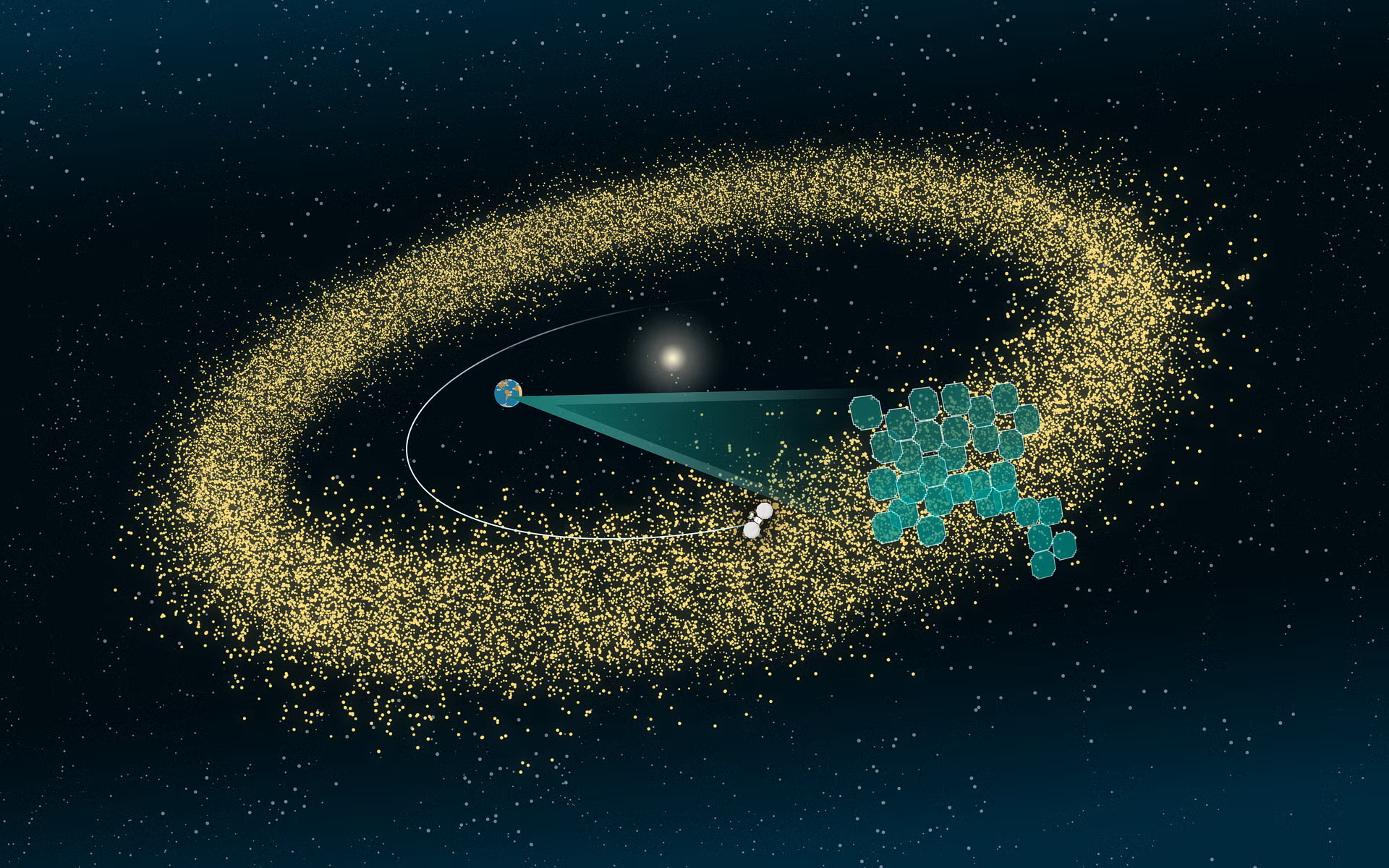
Rubin Observatory and the Future of Cosmic Discovery – A Giant Leap into the Dark Mysteries of the Universe
Introduction
On July 8, 2025, a major scientific milestone made global headlines: the Vera Rubin Observatory, perched atop Cerro Pachón mountain in Chile, released its first set of cosmic images through the Simonyi Survey Telescope. Named after the astronomer Vera Rubin, this observatory promises to answer some of the biggest cosmic questions—including the formation of the Milky Way, dark matter, and the fate of the universe.
This event marks the beginning of a new era in astronomy—one driven by high-tech optics, artificial intelligence, and unprecedented observation of the night sky. For CLAT 2026 aspirants, understanding such science-based current affairs is crucial, as it ties into General Knowledge, Legal Reasoning, and even reading comprehension sections.
Why in News?
- On June 23, 2025, the Vera Rubin Observatory released its first images of the sky.
- It is equipped with the world’s largest digital camera—the Simonyi Survey Telescope, designed for wide-field astronomy.
- It can view an area equal to 40 full moons in one go—far exceeding previous technologies like the Hubble and James Webb telescopes.
- It will revolutionize our understanding of:
- Dark matter and dark energy
- Milky Way structure
- Solar system asteroids and comets
- Time-lapse evolution of the universe
Point-wise Summary of the News Report
- The Observatory and Its Purpose
- The Vera Rubin Observatory is located in the Andes mountains in Chile, at a height of 8,684 feet.
- Its mission: to explore cosmic phenomena through a ten-year survey of the southern hemisphere.
- The observatory will collect 20 terabytes of astronomical data per night using an AI-backed telescope system.
- The Simonyi Survey Telescope
- Named after Charles Simonyi, it is the largest digital camera telescope ever constructed.
- Composed of three mirrors, the largest being 8.4 meters in diameter, designed to allow wide-field, high-resolution imaging.
- Can capture an area equivalent to 40 full moons at once—Hubble captures 1%, Webb ~7% of a full Moon for reference.
- Offers an unprecedented field of view, ideal for mapping millions of objects quickly.
- Key Areas of Exploration
Area | Objective |
Milky Way Structure | Detailed map of the Milky Way’s spiral arms, stars, and formation patterns. |
Dark Matter & Energy | Unravel the nature and composition of invisible cosmic substances. |
Solar System Census | Identify and study asteroids and comets—especially near-Earth objects (NEOs). |
Changing Sky | Create the most detailed time-lapse of the universe, monitoring changes over time. |
- Breakthrough in Observation
- Unlike traditional telescopes that focus on one area, Rubin will constantly scan the sky, adjusting every 10 minutes to new positions.
- Uses a digital automation system that allows for:
- Rapid identification of moving objects (asteroids, comets).
- Real-time comparison of current and past images to detect changes.
- Creation of a massive image library cataloguing billions of celestial bodies.
- Revolutionary Data Handling
- Data is processed using advanced software, capable of:
- Identifying 2,140 brand-new asteroids in just 10 hours of trial data.
- Triaging over 1,000 new objects nightly.
- Data storage and analysis will involve AI-based filtering, distinguishing meaningful patterns from noise.
- What Makes Rubin Unique
- Speed: Can scan the entire southern sky every 3 nights.
- Precision: Mirrors and sensors reduce distortion, enabling fine measurements.
- Legacy: Named after Vera Rubin, the American astronomer who provided first evidence of dark matter in galaxies (1970s).
- Versatility: While traditional telescopes need predefined targets, Rubin’s design automates target selection, making discoveries organic and data-driven.
In-Depth Analysis for CLAT 2026 Students
- Legal and Ethical Dimensions of Space
- Space Law: As more nations and private actors engage in space exploration, issues like data ownership, astro-sovereignty, and space traffic regulation gain importance.
- AI in Space: Rubin uses AI for target selection and anomaly detection—raises legal questions about autonomous decision-making in scientific missions.
- Intellectual Property (IP): Who owns the data and software behind Rubin’s discoveries? Potential topics in legal reasoning.
- GK & Science-Based Current Affairs
- This observatory could be a landmark question for CLAT 2026’s current affairs section:
- Identify observatory/telescope.
- Name of astronomer it’s named after.
- Role in dark matter discovery.
- Reading Comprehension
- Passages like this (dense but exciting science reporting) are common in CLAT’s RC section. You should:
- Identify main themes: automation, observation, scale of innovation.
- Distinguish between observational astronomy and theoretical cosmology.
Note: Explanation of Peculiar Terms
Term | Explanation |
Dark Matter | A form of matter that doesn’t emit light or energy, yet makes up most of the universe’s mass. |
Dark Energy | A mysterious force driving the accelerated expansion of the universe. |
Wide Field Telescope | A telescope that can capture large portions of the sky at once. |
Time-lapse imaging | A method where successive images are taken over time to show changes (used here to study cosmic events). |
Simonyi Survey Telescope | The telescope in Rubin Observatory with a massive camera and automation systems. |
AI-powered Observation | Use of artificial intelligence to automate target selection, image comparison, and data analysis. |
Conclusion
The Vera Rubin Observatory represents humanity’s boldest venture yet into the unknown corners of the cosmos. Its revolutionary field of view, automated systems, and AI-driven exploration open new frontiers in astronomy. The telescope will not only unravel the deepest mysteries of the universe—like dark matter, energy, and the Milky Way’s secrets—but also enable global scientists to catalogue near-Earth objects that could potentially impact the Earth.
For CLAT 2026 aspirants, this event bridges science, law, and current affairs. It connects space innovation with themes of governance, ethics, and public responsibility. As global cooperation in astronomy accelerates, students must understand the legal and societal dimensions of such technological feats.




